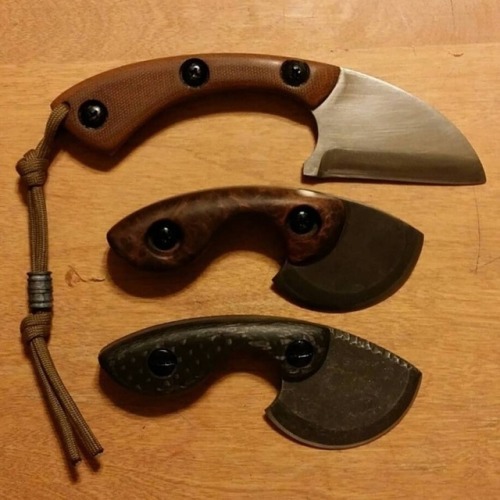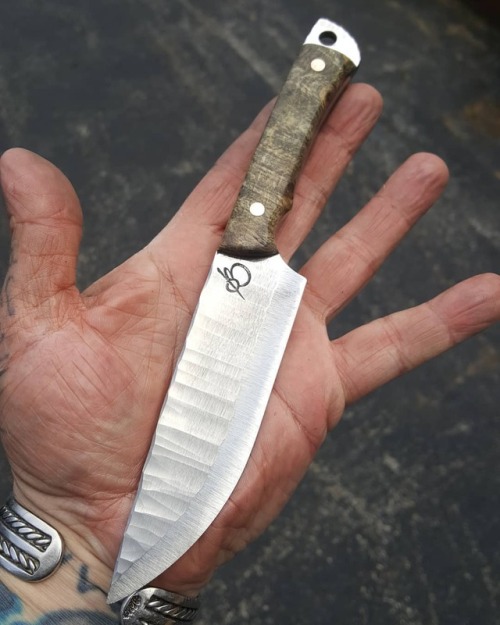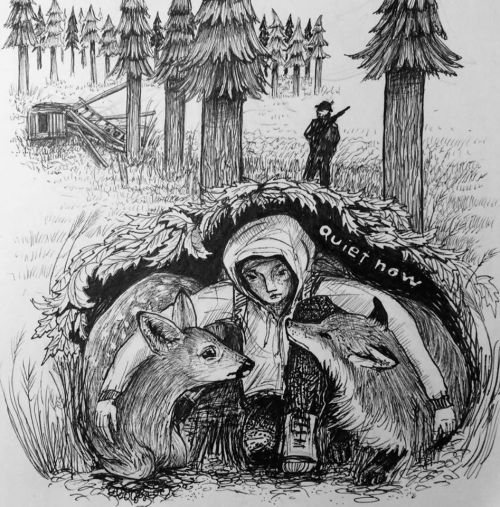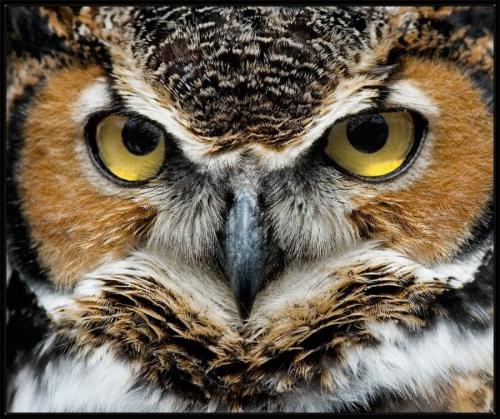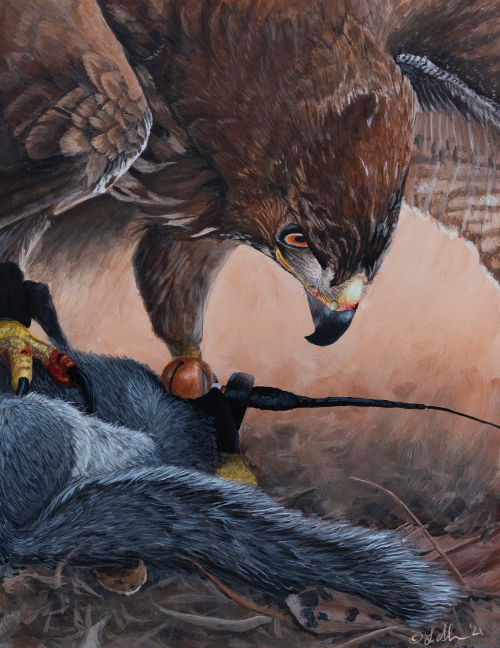#hunting
Another throwback…first three knives I ever made for customers. I try to revisit my old work to keep my head screwed on straight and things in perspective. Thanks to all of you who’ve come aboard for the ride, lots more to come ❤️ #03MW #03MetalWorks #knives #blades #knifemaker #knifemaking #Appreciation #askr #skinner #hunting #skinning #PurposeDriven #FairWharning #wharncliffe #SupportTheWarriorClass #STWC #MarineJoe #SaltyAsFuck
Post link
Finished this one up today for @xxjarrodxx. Finishing up the sheath tomorrow. Buckeye burl from @traviszumwalt always making my work look good #03MW #03MetalWorks #knives #blades #knifemaker #knifemaking #Vanguard #hunting #SupportTheWarriorClass #STWC #MarineJoe #SaltyAsFuck
Post link
Hotrodded Vanguard Available: Rocked spine, acid etched and washed, black paracord wrapped handle. Includes a powder coated lanyard bead and a kydex pocket sheath. Hit me up if you’re interested #03MW #03MetalWorks #knives #blades #knifemaker #knifemaking #Vanguard #hunting #Hotrodded #SupportTheWarriorClass #STWC #MarineJoe #SaltyAsFuck
Post link

Beauties partying. Getting ready for a client in USA
Sold out, going to its owner

What you say about this one?
Who likes it?

Leather sheath stitching
Handmade

Vikings Axe

When you are in love with your knife

J2 Steel fur style blade with rose wood handle
What you say about this

On the way to its owner

Bowie knife with leather sheath sent to its owner

File work on spine of a folding knife #knife#knife#knifemaker

I now know why they call these insects “hanging thieves.” After they catch their prey, these flies perch by one or two of their legs and using the rest to manipulate the meal. Their larvae live in the soil, feeding on grubs. No insect is safe with these predators around.
#inthegarden #diptera #arthropods #damselfly #hangingthief #odonate #beneficialbugs #nativeplants #garden #gardener #gardenersworld #predatorandprey #predator #hunting #biodiversity #ecology
Post link
Hunting Rebecca Francis
Howley, NYMag.com
2 August 2015
Completely fascinating article about one of America’s best hunters - Rebecca Francis - and what motivates her to hunt big game around the world.
What I’m interested by in this story is first Francis’s extreme physical practices as she hunts:
“Consider her epic two-week sheep hunt in Alaska, undertaken with Lee in 1997. This involves, in extremely compressed summary: being dropped at the bottom of a 3,000-foot Alaskan glacier with a 50-pound pack and as many miles from anything; crossing said glacier over a day of difficult hiking; climbing the steep shale, surface-of-the-moon-like striated cliffs, on which sheep actually live; camping on plateaus so small they can’t accommodate the entire tent; remaining in that tent through a three-day rainstorm that drives the peak right off an adjacent mountain; running out of food; climbing back over the glacier to get to where the plane can drop more food; returning, once again over the glacier, to the cliffs; camping through a terrifying windstorm that threatens to sweep the tent off the mountain; engaging in an activity Francis calls “celebrating our anniversary” on a cliff while waiting for sheep to show up; shooting a ram from 500 yards at dusk; watching that ram tumble in a kind of blur of white and gray down a ravine in the glacier; having no idea which ravine; returning to camp for a few hours’ sleep; waking up to search for the carcass; spotting, by incredible luck, the mangled ram at the bottom of a ravine; slicing the ram open to look for any meat not ruined by bone fragments; and carrying the ram back over the glacier. Francis’s pack, when she made the sheep-meat-laden journey back, weighed 90 pounds. She weighed 115.”
This is, I would argue, a substantial physical respect being paid to the animal which legitimises the hunt as a practice.
Within anthropology, studies of animal-human relations and particularly hunting often find a kind of symmetry and reciprocity, known as ‘perspectivism’: the animal has a consciousness and decides to be killed, just as much as the hunter decides to catch it.
“Men make gifts to the animal world, that is to the bush, and in return are the recipients of gifts of game animals killed by the hunters”
– Tanner (1979: 173)
“[Religious observances] materially affect the efficiency of hunting and trapping in an environment where animals consciously regulate hunters’ access to them. If these acts are performed correctly, it is said that slain animals will be reborn and voluntarily offer themselves to hunters by entering traps and allowing themselves to be killed with guns. Cree sometimes say that hunters can only kill animals when this voluntary self-sacrifice occurs. If the practices are omitted or performed incorrectly, it is said that animals will fail to be reborn or will withold themselves from hunters by frustrating attempts to kill them.”
– Brightman (1993: 103)
In the Siberian and North American context, this human-animal exchange operates through notions of compassion, gift-giving and reciprocity; in Amazonia through predation and commensality (Fausto 2007).
The ritualistic qualities of Francis’s hunt - the silence, the waiting, the physical endurance, the bow & arrow, the restraint in when & what she’ll choose to kill: these I would argue provide the adherence to a notion of proper forms (and, in addition, the levelling of odds between hunter and hunted) that legitimise the act of killing.
As an anthropologist, though, I must also pay attention to Francis’s own perceptions of what she does. Her recognition of the fierce intimacy of hunting has perspectivist overtones in the talk of relationship:
“It’s a relationship I built with them that few people ever have. It’s you and God’s creation. It’s as close to God as you can get.”
The notion of animals as a gift from God’s creation for human use also has direct parallels in the Arctic anthropology I’m reading:
”…the game animals that we hunt for food are the things that come from God. From the time earth came into being and subsequently after that, game animals were placed so that humans can use them for sustenance. That is the reason why they are, right up to this day.“
– George Kappianaq, quoted in Laugrand & Oosten (2015 p.3)
Looking again at where Francis explains how she understands her hunting practice, we see her also justify her hunting in terms of human nature, provision of sustence, and this one-on-one encounter with animal nature:
“It’s like,” she says, “you look at dogs. You have these cute lapdogs, and they’re sweet and tender. But then you have dogs that are natural hunters. That’s just who they are. It doesn’t make them a bad dog. They’re still dogs. And some people are made different. It’s not because I want to go murder something and take something’s spirit. It’s, I’m gonna provide meat for my family. I’m gonna have an experience in nature. I’m gonna be one-on-one with this animal.”
I don’t think I would call her motivation to encounter the Other, you know. I think it’s more perspectivist than that: so, not that the animal isn’t an-other but she’s also recognising it as a consciousness, and there is a glimmer of knowability in that.
The author does however rightly draw our attention to the contradictions and romanticism in these explanations:
"On the long flight home, I look again at the picture. I have by this time seen pictures of Francis scraping the meat from a moose in which most of her body is literally inside the moose. She is a survivalist chasing violent communion with nature, almost unimaginably tolerant of physical pain. The giraffe in the photograph is an animal that exists to be killed by people like Francis, wild but not quite wildlife, live but not quite livestock, his entire life scripted from conception onward to provide hunters with the idea of wilderness in a place where wilderness has been made impossible.”
Food for thought.
*
References & further reading:
- Brightman, Robert 1993 'Grateful Prey’ (Google Book)
- Fienup-Riordan, Ann 1994 'Boundaries and Passages: Rule and Ritual in Yup'ik Eskimo Oral Tradition’ (Google Books)
- Laugrand & Oosten 2015 'Hunters, Predators & Prey: Inuit Perceptions of Animals’ (Google Books)
- Tanner, Adrian 1979 'Bringing Home Animals’
- Willerslev, Rane 2004 'Not Animal, Not Not-Animal: Hunting, imitation and empathetic knowledge among the Siberian Yukaghirs’ JRAI 10(3) (full text pdf)
Post link
Did You Know
There are about 205 species of owls. These are divided into two basic groups; barn owls and true owls.
Barn owls have a heart-shaped face, long legs and powerful talons. They are considered medium-sized owls with wingspans of usually around 106 cm (3½ feet).
True owls are a more diverse group than the barn owls with almost 190 species. True owls can vary greatly in size from the mini Elf Owl (40 grams/1.4 oz) to the bulky Eurasian Eagle Owl (up to 1.5–3 kg/3.3–6.6 lb). True owls have a round facial disc, short tail and large head and their mottled plumage helps to conceal them from predators and prey.
Post link


Another one down! Finally got the catch on video.

